History of Jharkhand
Jharkhand, often referred to as “the land of forests,” is a picturesque state in eastern India celebrated for its rich cultural heritage, natural beauty, and mineral wealth. The name “Jharkhand” derives from the Indo-Aryan words “Jhar,” meaning forest, and “Khand,” meaning land, a reflection of its dense forest cover and biodiversity that shapes its identity.
The state occupies a strategic geographical location, bordered by West Bengal to the east, Chhattisgarh to the west, Uttar Pradesh to the northwest, Bihar to the north, and Odisha to the south. It ranks as the 15th largest state by area and is the 14th most populous state in India, housing a diverse and vibrant population. The bustling city of Ranchi serves as its capital, while Dumka functions as the sub-capital, showcasing the state’s administrative importance.
Jharkhand is renowned for its deep spiritual and cultural roots, attracting thousands of pilgrims and tourists to its iconic religious sites. Baidyanath Dham, a prominent Hindu temple dedicated to Lord Shiva, stands as a symbol of faith. The state is also home to Parasnath, a major Jain pilgrimage destination, the revered Dewri Temple, and the Rajrappa temple complex, celebrated for its Chhinnamasta Temple. These sacred landmarks enhance the state’s spiritual allure and cultural significance.
The state’s landscape is an ode to nature, featuring stunning waterfalls, lush hills, and a variety of flora and fauna. Among its natural wonders, Hundru, Dassam, and Jonha waterfalls are particularly famous for their breathtaking beauty. These natural treasures not only make Jharkhand a visual delight but also sustain the livelihoods of its tribal communities, who have lived in harmony with the environment for generations.
Jharkhand: A Land of Forests, Culture, and Mineral Wealth
Despite its natural and cultural riches, Jharkhand faces significant challenges. The state is endowed with immense mineral wealth, contributing over 4% of India’s total mineral production, including coal, iron ore, copper, and uranium. However, this wealth has not fully benefited its population. An alarming 39.1% of the people live below the poverty line, and 19.6% of children under five are malnourished. This stark economic disparity is often referred to as the “resource curse,” where resource abundance fails to uplift the local population, posing a pressing challenge for the state’s development.
Historically, Jharkhand’s identity as a land of forests has been acknowledged since ancient times. The Mahabharata mentions the region as “Kark Khand” due to its location near the Tropic of Cancer (Kark Rekha). Medieval records like the Bhavishya Purana identify Jharkhand as one of the seven Pundra Desas. Its name also appears on a 13th-century copper plate from the reign of Narasimha Deva II of the Eastern Ganga dynasty, describing the forested land stretching from Baidyanath Dham to Puri in Odisha. Historical texts, including the Akbarnama, document its boundaries, which once extended from Panchet in the east to Ratanpur in the west and Rohtasgarh in the north to the Odisha frontier in the south.
Today, Jharkhand is predominantly rural, with only 24% of its population living in urban areas as per the 2011 census. While cities like Ranchi are rapidly growing as hubs for education, healthcare, and industry, other urban centers like Jamshedpur and Dhanbad hold unique significance. Jamshedpur, India’s first planned industrial city, is the headquarters of Tata Steel, a global leader in the steel industry, while Dhanbad is recognized as a key coal mining center.
However, Jharkhand’s tribal population, a cornerstone of its identity, often faces socio-economic marginalization. Despite this, the state holds immense potential. By leveraging its natural and cultural assets, coupled with investments in education, healthcare, and infrastructure, Jharkhand is gradually working toward a brighter future. Addressing poverty and promoting sustainable industrial growth remain pivotal to its progress.
Jharkhand’s journey is one of contrasts—rich in resources and culture yet striving to overcome socio-economic challenges. It is a land where tradition meets opportunity, offering a promising future for its people.
The Rich Historical Tapestry of Jharkhand
Jharkhand, often referred to as the “Land of Forests,” has a history that spans across ancient, medieval, and modern periods. Its vibrant past is marked by the rise and fall of empires, cultural advancements, and resistance movements that defined its identity. Below is an exploration of Jharkhand’s history across the ages.
Ancient Period: The Roots of Civilization
Jharkhand’s history dates back to the Mesolithic-Chalcolithic period, evident from ancient cave paintings and tools discovered in the Chota Nagpur Plateau region. Key findings include:
- Isko Cave Paintings (Hazaribagh District): These Meso-Chalcolithic art pieces (9000–5000 BCE) reveal the artistic and cultural significance of the region.
- Copper Hoard Culture (2nd Millennium BCE): The region witnessed the spread of copper tools, indicating advancements in metal usage.
- Kabra-Kala Mound (Palamu District): Artefacts spanning the Neolithic to medieval periods were discovered, including pottery, iron slags, and microliths, showcasing a continuum of habitation and cultural evolution.
During the Mauryan period, the region came under Emperor Ashoka’s reign, referred to as the Atavika states (forest regions). The discovery of burnt brick houses, pottery, and coins at Saridkel further solidifies Jharkhand’s ancient relevance.
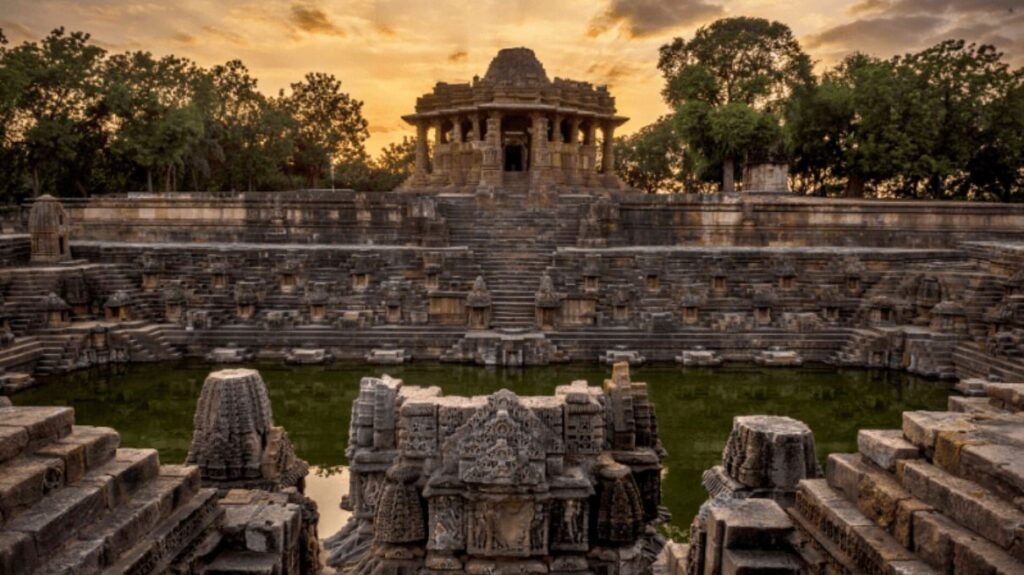
Medieval Period: The Age of Dynasties
In the medieval era, Jharkhand was ruled by Nagvanshi, Pala, Khayaravala, Ramgarh Raj, and Chero dynasties. This period saw significant developments:
- Buddhist Influence: A monastery built during the Pala period (10th century) was discovered in Hazaribagh.
- Shashanka’s Rule: Chinese traveler Xuanzang referred to the region as Karnasuvarna, with Shashanka as its ruler.
- Nagvanshi Kingdom: Notable rulers like Bhim Karn repelled invasions and strengthened the region’s defense.
Iconic architectural sites such as the Khakparta Temple (Lohardaga) and Maluti Temples (Dumka) highlight the architectural brilliance of this era.
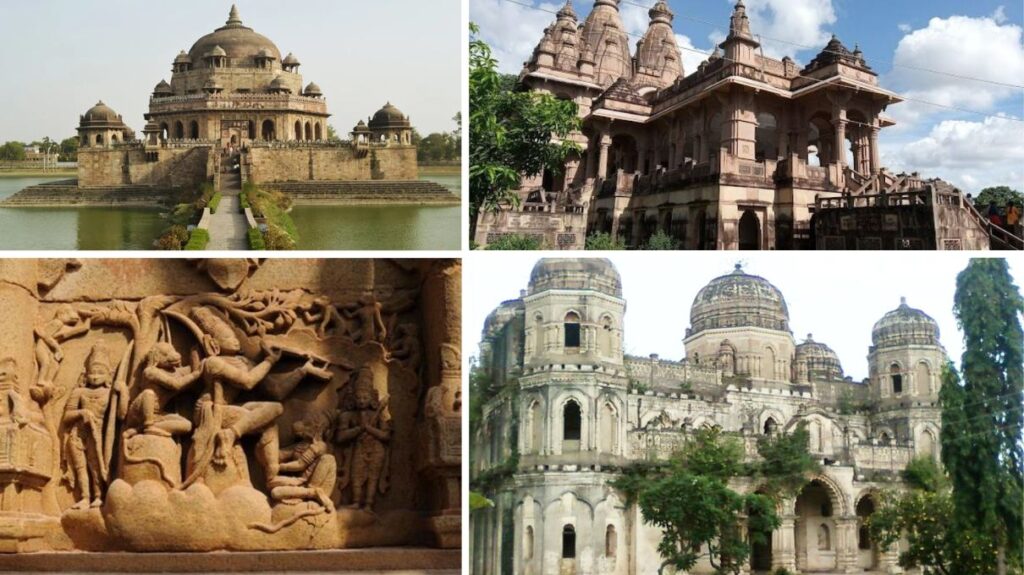
Modern Period: Colonial Influence and Resistance
With the arrival of the Mughals and subsequently the British East India Company, Jharkhand underwent significant political and social transformations.
Mughal Era
- Emperor Akbar’s general, Raja Man Singh, extended Mughal influence to Palamu in 1574.
- Iconic structures like the Kapilnath Temple (1643) and Jagannath Temple (1691) were constructed during this time.
British Colonization
- Chuar Rebellion (1767): Led by Jagannath Singh Patar, this was one of the first revolts against British oppression.
- Santhal Rebellion (1855): Led by Sidhu and Kanhu Murmu, this uprising against tax imposition became a defining moment in tribal resistance.
- Birsa Munda Movement (1895–1900): Birsa Munda’s revolt against colonial exploitation remains a symbol of tribal pride and resilience.
Prominent leaders like Thakur Vishwanath Shahdeo and Pandey Ganpat Rai also played crucial roles in the Indian Rebellion of 1857, further emphasizing Jharkhand’s contribution to India’s freedom struggle.
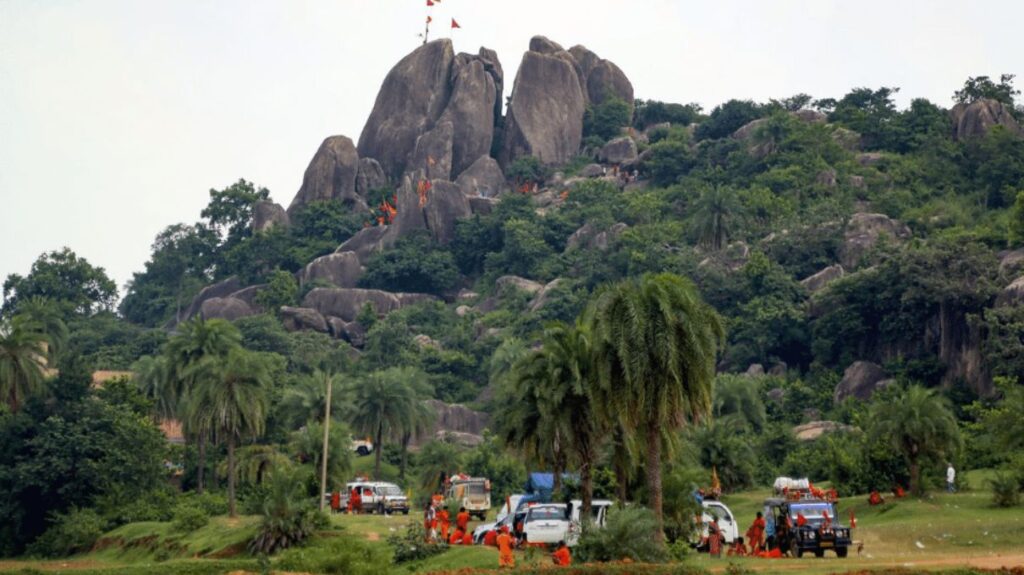

Jharkhand’s Role in India’s Independence
Jharkhand gained prominence during the Ramgarh Session of 1940, presided over by Maulana Azad. The event saw the participation of key leaders like Mahatma Gandhi, Jawaharlal Nehru, and Subhas Chandra Bose, highlighting the region’s strategic importance in the freedom movement.
Preserving Heritage and Legacy
Today, Jharkhand’s rich history is celebrated through its temples, forts, and archaeological sites. Places like the Palamu Forts and Navratangarh Fort stand as enduring reminders of the region’s historical and cultural legacy.
Jharkhand’s history, with its blend of ancient traditions, medieval glory, and modern struggles, remains a source of pride and inspiration for the state and the nation.
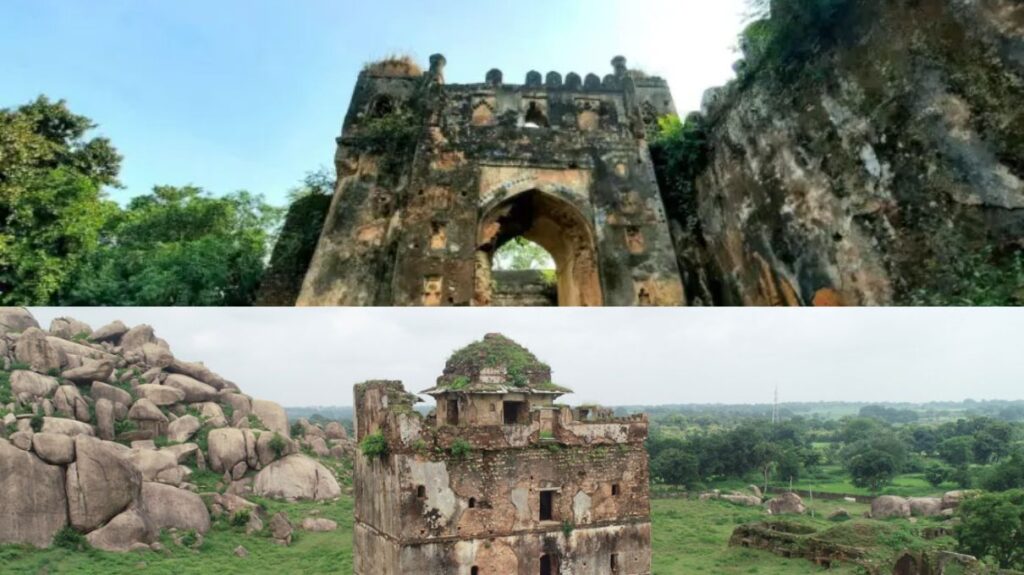
Formation of Jharkhand: The Long Struggle
After India’s independence in 1947, the tribal regions of present-day Jharkhand were divided among several states. Changbhakar, Jashpur, Koriya, Surguja, and Udaipur were integrated into Madhya Pradesh, while Gangpur and Bonai joined Orissa, and Kharsawan and Saraikela became part of Bihar. Early demands for a tribal state in eastern India emerged as far back as 1928, with the Unnati Samaj submitting a memorandum to the Simon Commission. Leaders like Jaipal Singh Munda and Ram Narayan Singh championed these aspirations, but initial proposals for a separate Jharkhand state faced rejection due to linguistic diversity, tribal minorities, and economic concerns.
The demand gained momentum with the formation of political organizations such as the Jharkhand Party (led by Jaipal Singh Munda), Jharkhand Mukti Morcha (JMM) in 1972, and the All-Jharkhand Students Union (AJSU). The movement saw active participation from tribal and non-tribal groups alike, marking a turning point in the push for statehood. Political figures like Binod Bihari Mahato, Shibu Soren, and A. K. Roy became prominent faces of this struggle.
Political Movements and Autonomous Councils
In 1989, the central government acknowledged the demand for Jharkhand by forming a committee to address the issue. While the creation of the Jharkhand Area Autonomous Council in 1994 provided limited self-governance, it failed to satisfy the aspirations of the people. Disagreements between groups like JMM and AJSU further complicated matters, as strategies diverged between electoral participation and calls for boycotts.
Amidst these challenges, efforts by the Jharkhand Coordination Committee, led by figures like Ram Dayal Munda, sought to unify various factions. In 1998, a broad coalition of political parties, including JMM, AJSU, and the Bharatiya Janata Party (BJP), formed the All-Party Separate State Formation Committee to reinvigorate the movement. A series of protests and political negotiations ensued.
Statehood Realized
In 1999, the BJP pledged to create a separate Vanachal state, which was later renamed Jharkhand. The passage of the Bihar Reorganisation Bill in 2000 paved the way for the formation of Jharkhand, comprising the Chotanagpur and Santhal Pargana regions of southern Bihar. On 15 November 2000, coinciding with the birth anniversary of tribal leader Birsa Munda, Jharkhand officially became India’s 28th state, with Babulal Marandi as its first Chief Minister.
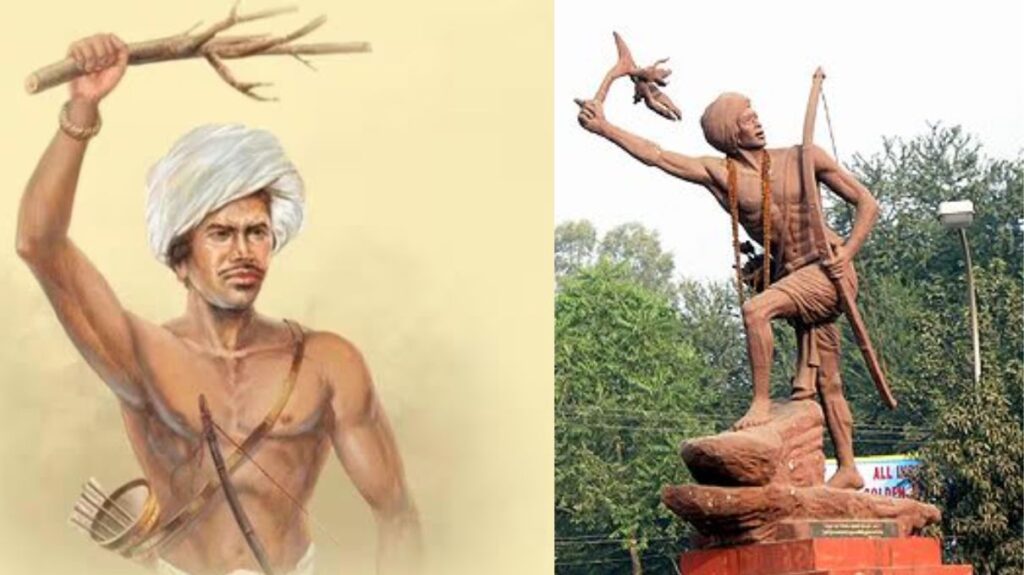
Socio-Economic Challenges and Resources
Jharkhand, endowed with rich mineral resources, including iron ore, coal, copper, and uranium, is a significant contributor to India’s economy. However, socio-economic disparities persist. As per the 1991 census, only 45% of villages had access to electricity, and road connectivity was limited. Tribal communities, comprising 28% of the population, often found themselves marginalized from the benefits of resource extraction.
Naxal Insurgency and the Red Corridor
The state has faced a persistent Naxal-Maoist insurgency since 1967. Rooted in socio-economic inequalities, the insurgency thrives in the Red Corridor, where poverty and displacement provide fertile ground for recruitment. Jharkhand’s abundant natural resources have made it a focal point for the insurgents, who oppose the federal monopoly on sub-surface resources and advocate for tribal rights.
Despite counter-insurgency efforts, the conflict has claimed thousands of lives and continues to pose a challenge to governance and development in the state.
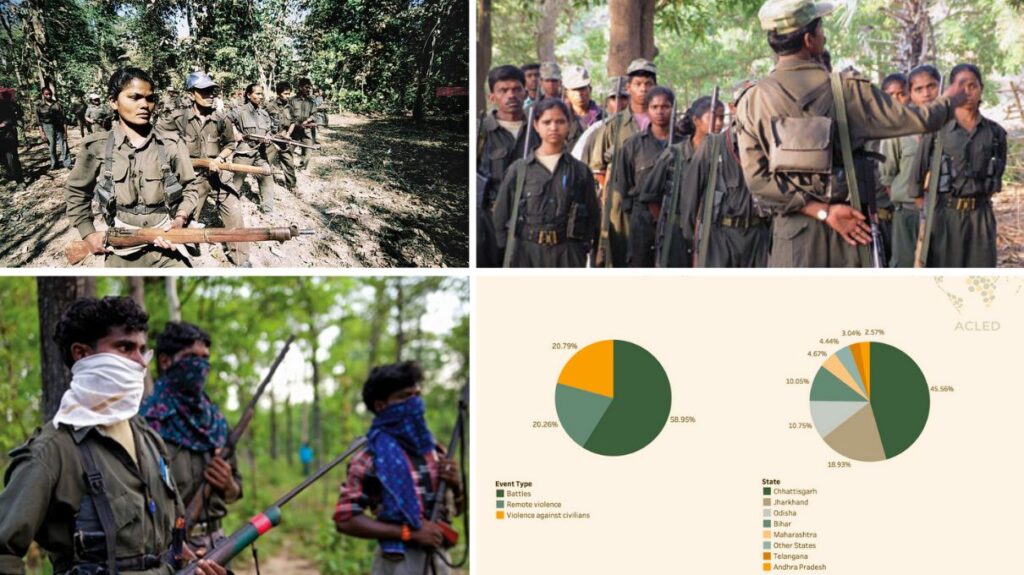
Geography of Jharkhand
Jharkhand is located in the eastern part of India, bordered by West Bengal to the east, Chhattisgarh and Uttar Pradesh to the west, Bihar to the north, and Odisha to the south. The state spans a geographical area of 79,716 square kilometers (30,779 square miles) and is predominantly characterized by the Chota Nagpur Plateau, which forms a significant portion of its landmass.
Several rivers flow through the plateau, contributing to the state’s water resources. Notable rivers include the Damodar, North Koel, Barakar, South Koel, Sankh, and Subarnarekha. These rivers originate from various parts of Jharkhand and play a crucial role in the region’s agriculture and ecology. The state also retains vast forest cover, sustaining a diverse array of wildlife, including elephants and tigers.
Climate of Jharkhand
Jharkhand experiences a range of climatic conditions, from humid subtropical in the north to tropical wet and dry in the southeast. The state has five primary seasons: summer, rainy season, autumn, winter, and spring. The summer season lasts from mid-April to mid-June, with May being the hottest month, characterized by temperatures reaching around 37°C (99°F) during the day and 25°C (77°F) at night.
The southwest monsoon, which occurs from mid-June to October, is responsible for the majority of the state’s annual rainfall, ranging from 1,000 mm in the central regions to more than 1,500 mm in the southwest. The winter season lasts from November to February, with temperatures in Ranchi, for example, varying between 10°C (50°F) and 24°C (75°F). Spring spans from mid-February to mid-April, bringing mild temperatures.
Hills and Mountain Ranges
- Parasnath Hill: Situated in Giridih district, Parasnath Hill is considered sacred by Jains and Santal tribes. It is believed that 20 of the 24 Tirthankaras attained Moksha at this site. The hill reaches a height of 1,365 meters (4,478 feet).
- Netarhat: Known as the “Queen of Chotanagpur,” Netarhat is a hill station located in the Latehar district. It is home to the Netarhat Residential School and Netarhat Dam.
- Rajmahal Hills: These hills, found in the Sahibganj and Godda districts of eastern Jharkhand, belong to the Jurassic era and feature scenic landscapes with waterfalls and lakes.
- Trikut Hill: Located near Deoghar, Trikut Hill is named after its three main peaks. It rises to 747 meters (2,470 feet) and is a popular tourist destination.
- Tagore Hill: Located in Ranchi, this hill is named after Rabindranath Tagore’s brother, Jyotirindranath Tagore, who visited the area in 1908. It offers a panoramic view of the city.
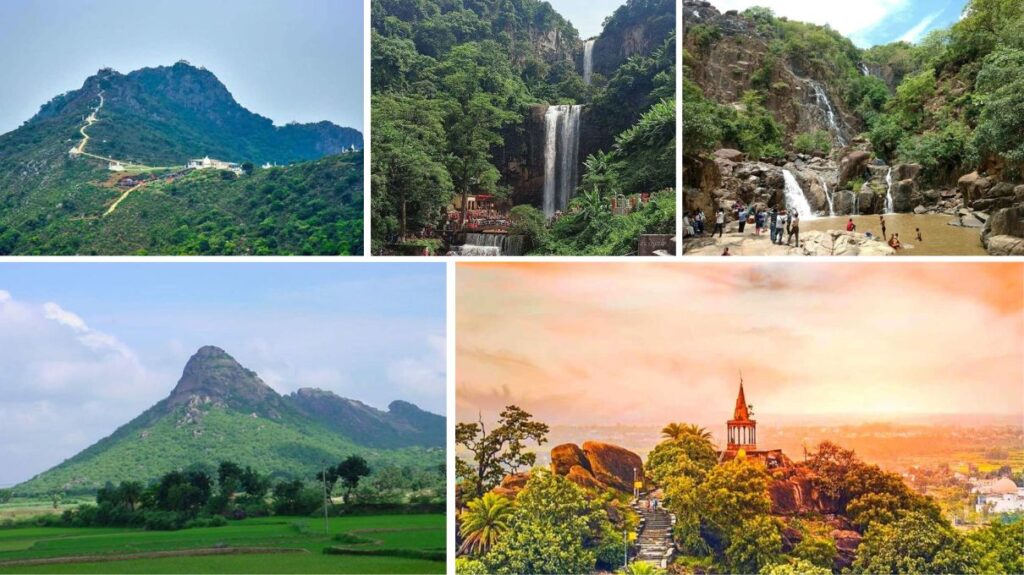
Main Rivers of Jharkhand
Jharkhand is home to several important rivers that contribute to the state’s agriculture and energy production:
- Ganga River: The Ganga passes through the northeastern district of Sahebganj, with cities like Sahebganj and Rajmahal situated along its banks.
- Son River: Originating from Amarkantak, the Son River flows through parts of Jharkhand, with the city of Sidhi located along its banks.
- Subarnarekha River: Originating from Ranchi’s Nagdi, the Subarnarekha River flows through major cities like Ranchi, Jamshedpur, and Ghatshila.
- Damodar River: Flowing through several districts, including Dhanbad, Bokaro, and Hazaribagh, the Damodar River is known for its role in coal mining and industrial development in the region.
- Other Rivers: Other significant rivers include the Kharkai, North Koel, South Koel, Lilajan, Ajay, Mayurakshi, and Barakar rivers, which contribute to the state’s water resources.
Flora and Fauna of Jharkhand
Jharkhand boasts a rich variety of flora and fauna, partly due to the Palamau Tiger Reserve, which is part of the Project Tiger initiative. The reserve is home to 39 species of mammals, 170 bird species, 97 seed-bearing plants, 46 shrubs and herbs, and a wide variety of reptiles and insects.
In addition to the Palamau Tiger Reserve, the state’s wildlife sanctuaries, such as the Dalma Wildlife Sanctuary, shelter species like Indian elephants and Bengal tigers. The state is also famous for the vivid red Palash flowers, which bloom during the fall, earning the nickname “forest fire.”
Jharkhand’s natural beauty, with its forests, hills, and rivers, plays a central role in the state’s ecology, supporting diverse wildlife while also posing challenges for conservation due to the increasing human population and industrial activity.
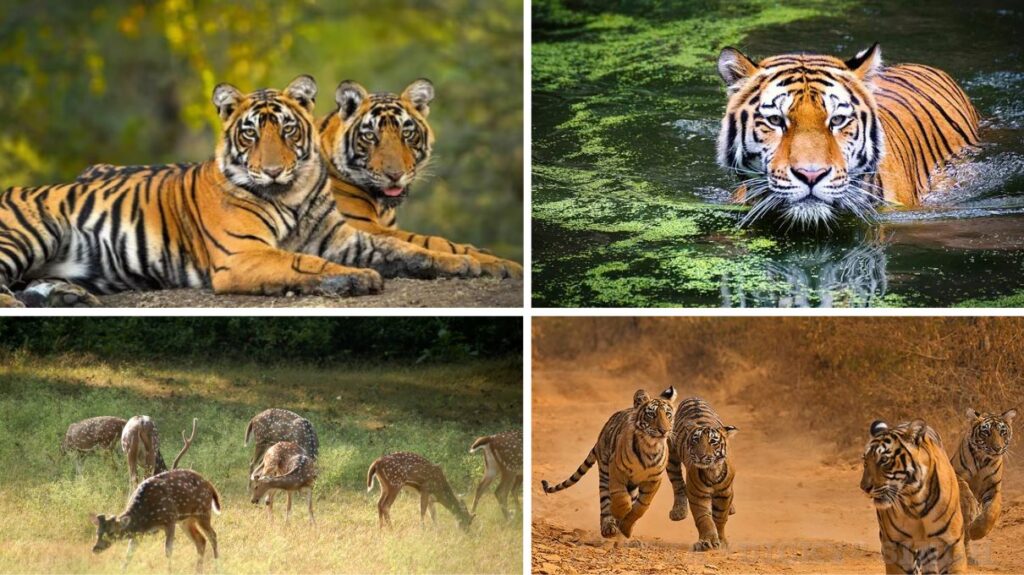
Demographics of Jharkhand
Population Growth and Composition
As of the 2011 Census, Jharkhand’s population stood at 32.96 million, consisting of 16.93 million males and 16.03 million females. The sex ratio in the state was 947 females for every 1,000 males. Over the years, Jharkhand has seen consistent population growth, with notable increases observed in the decades since its creation. The state witnessed a significant rise in its population from 6.07 million in 1901 to 32.98 million in 2011, reflecting a rapid pace of urbanization and development in the region.
Scheduled Tribes and Scheduled Castes
Jharkhand has a significant tribal population, with Scheduled Tribes making up 26.21% of the state’s total population. This makes it one of the most tribal-populated states in India. The state is also home to a sizable Scheduled Caste population, which accounts for 12.08% of the total. The tribes are mainly concentrated in districts such as Simdega, Khunti, Gumla, and Latehar.
Linguistic Diversity
Jharkhand is home to a wide variety of languages, with Hindi being the official language and the most widely spoken language, used as a link language across the state. However, Jharkhand’s linguistic diversity is evident as several other regional languages are spoken by large populations. The most spoken languages include Khortha (23.46%), Hindi (21.40%), and Bengali (9.74%). The state also has significant populations speaking languages such as Santali, Nagpuri, Urdu, and Magahi.
Official Language Recognition
In addition to Hindi, Jharkhand recognizes several languages as official within the state, reflecting its diverse ethnic makeup. These include Angika, Bengali, Bhojpuri, Ho, Kharia, Kurukh, Kurmali, Santali, and Urdu, among others.
Religion in Jharkhand
Jharkhand is predominantly Hindu, with 67.83% of the population adhering to Hinduism. Islam is the second-largest religion, followed by 14.53% of the population, while Christianity is practiced by 4.3%. There is also a significant proportion of the population (12.84%) that follows other religions, primarily Sarnaism, a nature-based tribal religion.
Religious Distribution by Region
The religious makeup varies across the state, with Hindus forming the majority in 19 of the 24 districts. Christianity has a strong presence in Simdega district, where it is the dominant religion (51.04%). Sarnaism, which is indigenous to Jharkhand, has a significant presence in districts like Lohardaga, West Singhbhum, and Gumla.
Government and Administration
Jharkhand follows a parliamentary system of government, with a Governor as the constitutional head of the state and a Chief Minister as the head of the executive. The state’s legislative power lies with a unicameral Legislative Assembly, and the judiciary is headed by the Chief Justice of the Jharkhand High Court.
The state’s administration is divided into five divisions and 24 districts, with Ranchi serving as the state capital. Jharkhand’s governance is characterized by a complex structure with a focus on both urban development and rural welfare.
Major Cities in Jharkhand
The largest cities in Jharkhand are pivotal to its economy and culture. Jamshedpur, located in East Singhbhum, is the most populous city, with over 1.3 million residents. It is an industrial hub, known for Tata Steel. Dhanbad, another major city, follows closely, known for its coal mining industry. Other significant cities include Ranchi, the state capital, Bokaro, and Deoghar, each playing an important role in the state’s economy and culture.
Administrative Divisions
Jharkhand is divided into five administrative divisions:
- Palamu Division: Includes districts like Garhwa and Palamu.
- North Chotanagpur Division: Comprising Chatra, Hazaribag, and Dhanbad.
- South Chotanagpur Division: Includes Ranchi and Gumla districts.
- Kolhan Division: Contains West Singhbhum and Seraikela Kharsawan districts.
- Santhal Pargana Division: Covers Deoghar, Dumka, and Sahebganj districts.
Economy
Jharkhand’s economy is largely driven by its rich natural resources and industrial sectors. As of 2020-21, the state’s gross domestic product (GDP) was ₹3.83 lakh crore (approximately $46 billion). The per capita GDP in 2018-19 was ₹82,430 ($990). The state benefits from a substantial industrial base, primarily in sectors like coal mining, steel production, and mineral extraction, which provide significant employment and contribute to the state’s economic growth.

Key Industries:
- Mining and Minerals: Jharkhand is rich in mineral resources, ranking highly in India for its deposits of coal (3rd), copper ore (1st), mica (1st), and uranium, among others. The state also holds large reserves of iron ore, bauxite, limestone, and chromite, supporting industries in steel and cement production. Notably, Tata Steel’s headquarters and primary plant are located in Tatanagar, and other major industries include the National Thermal Power Corporation (NTPC).

- Agriculture: Agriculture is another crucial part of the state’s economy. Major crops include rice, wheat, maize, and pulses, while vegetables such as tomatoes, carrots, cabbage, and pumpkin are also grown. The state is also involved in sericulture, with Jharcraft promoting local weaving and handicrafts.
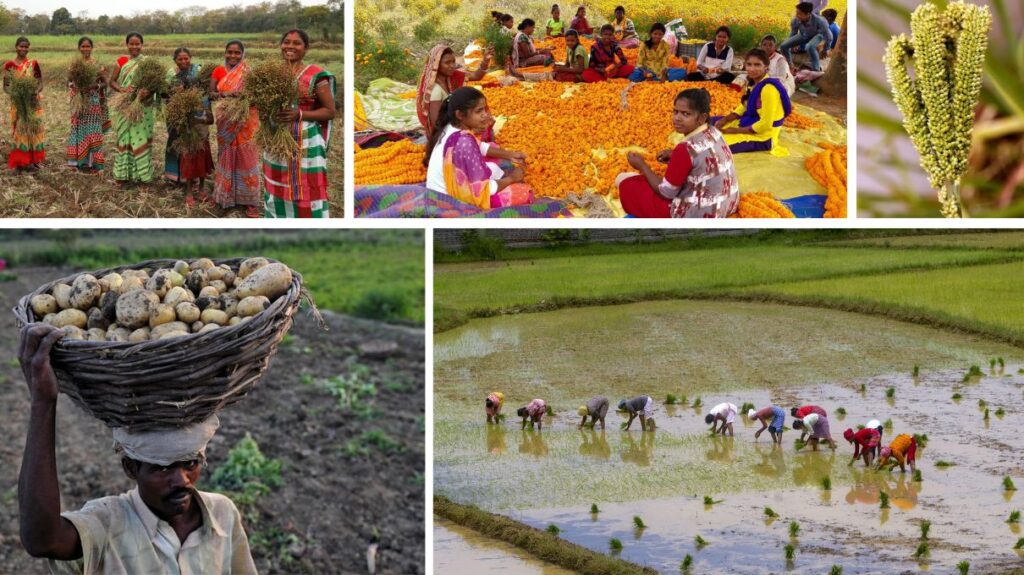
Culture
Jharkhand boasts a unique and vibrant culture, shaped by its diverse communities, traditions, and natural surroundings.
Cuisine: The staple foods of Jharkhand include rice, dal, roti, and a variety of vegetables and tubers. The cuisine uses minimal spices, focusing on natural flavors. Popular dishes include Chhilka Roti, Malpua, and Pitha. Bamboo shoots are a common ingredient, used in a variety of dishes like soups, curries, and pickles. Handia (rice beer) and Mahua daru (liquor made from the Mahua flower) are traditional alcoholic beverages associated with the state’s tribal communities
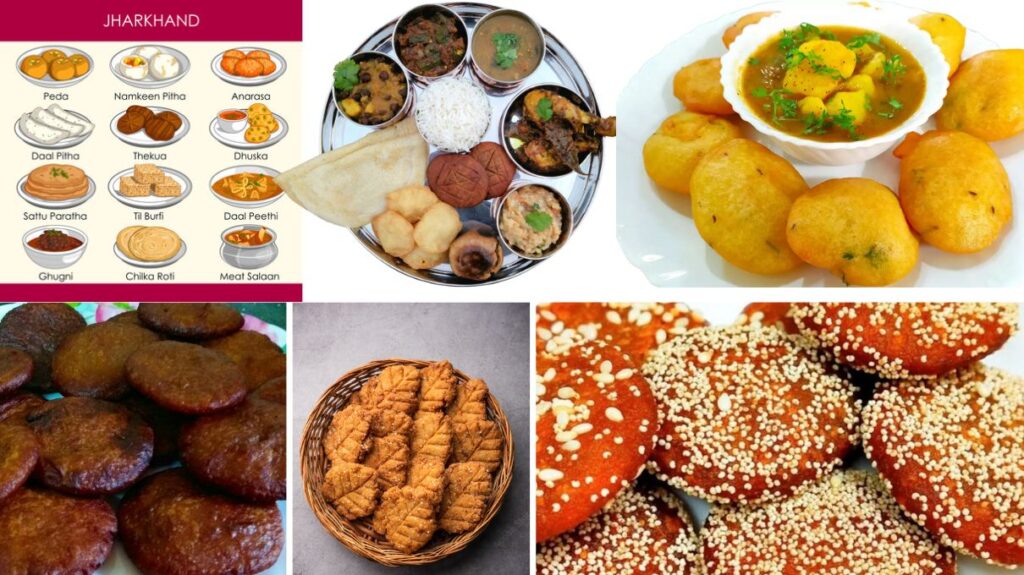
Folk Music and Dance: Jharkhand has a rich tradition of folk music and dance, with several dances associated with festivals and rituals. These include Jhumair, Chhau, Mundari, and Santali dances. The Chhau dance, particularly, is a martial art-based dance form, known for its energetic movements and storytelling.
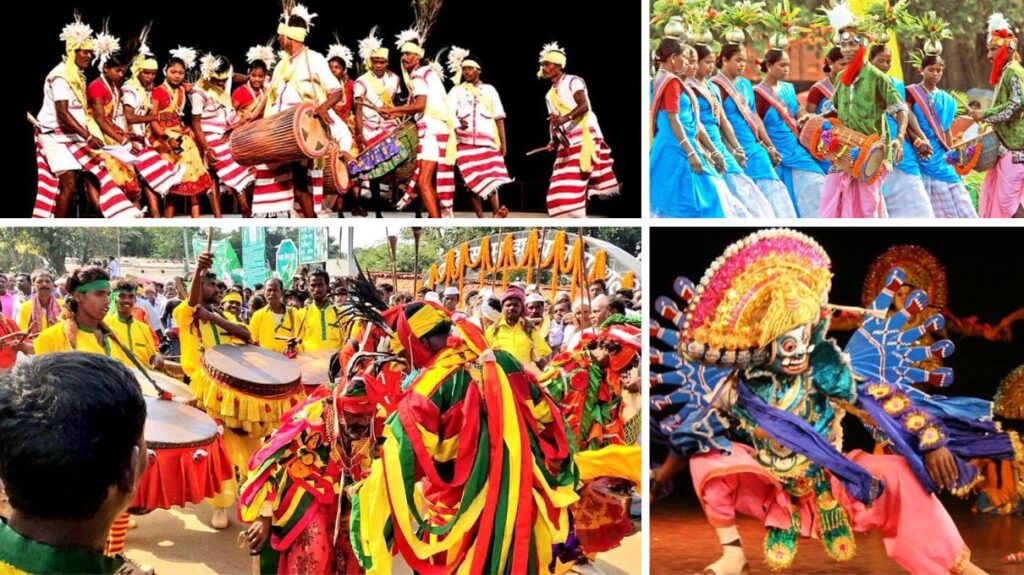
Festivals: The people of Jharkhand celebrate a wide variety of festivals, with both Hindu and tribal influences. Major festivals include Sarhul, Karam, Sohrai, Durga Puja, Makar Sankranti, and Holi. These festivals are marked by folk dances, rituals, and community gatherings.
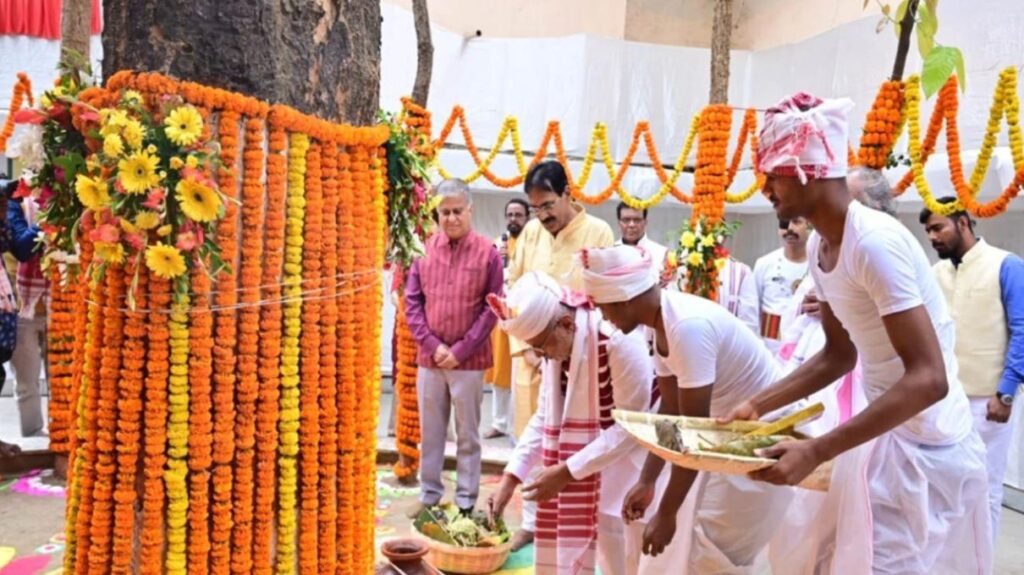
Paintings and Tattoos: The tribal communities in Jharkhand practice traditional mural arts such as Sohrai and Khovar paintings, which are typically done on walls during harvest festivals and weddings. Additionally, tattoo making, known as Godna, is a significant cultural tradition, especially among the tribal communities.
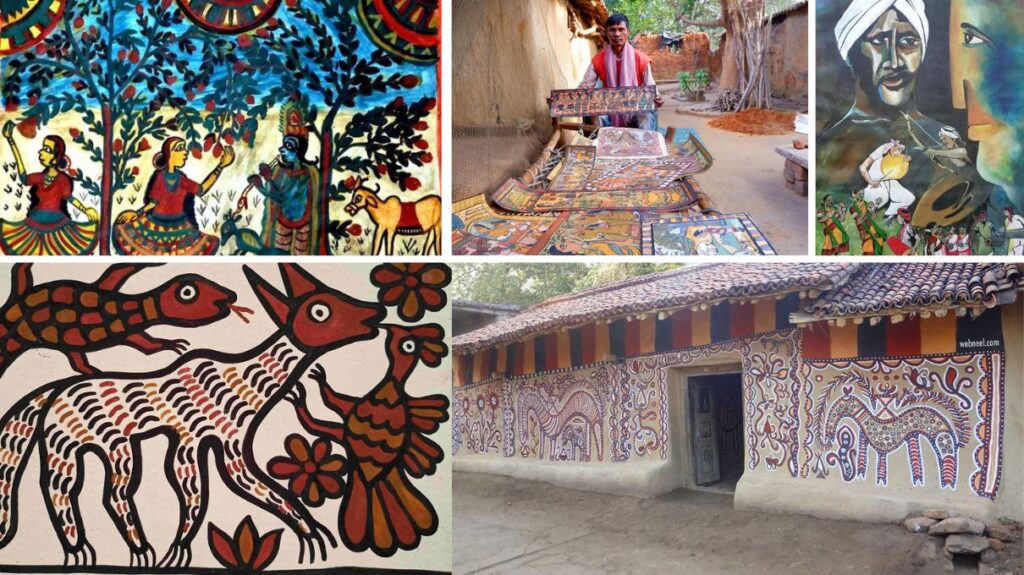
Cinema: The film industry in Jharkhand, known as Jhollywood, produces films in several regional languages including Nagpuri, Khortha, Santali, and Kurukh. The state’s cinematic output reflects its cultural diversity and the stories of its people.
Media: Jharkhand has a growing media landscape with several regional TV channels like DD Jharkhand and radio stations such as All India Radio. Newspapers like Hindustan, Dainik Jagran, and Prabhat Khabar serve the state, alongside national dailies such as The Times of India and The Hindu.
The state’s economy and culture are deeply interwoven, with industries benefiting from the rich natural resources, while the cultural expressions of its people continue to thrive in everyday life, from festivals to art forms.
Transport Infrastructure in Jharkhand
Airways
Jharkhand has a well-established air transport network with key airports in the state. Birsa Munda Airport in Ranchi is the largest domestic airport and connects the state to major cities like Delhi, Kolkata, Bangalore, Mumbai, and Hyderabad. Other important airports include Deoghar Airport, the second busiest in the state, and Sonari Airport in Jamshedpur, which connects to Bhubaneswar and Kolkata. Jharkhand also has Bokaro Airport, under Steel Authority of India Limited, which is being developed under the UDAN scheme for regional connectivity. Additionally, Chakulia, Dumka, Giridih, Dhalbhumgarh, and Dhanbad Airports cater to private and charter flights.
Roadways
Jharkhand boasts an extensive network of National Highways and State Highways, facilitating smooth transportation within the state and beyond. The state has 2,661.83 km of paved national highways. Key national highways include NH 18, NH 19, NH 33, NH 39, NH 114A, among others, connecting important cities and towns. The Golden Quadrilateral route, part of India’s ambitious road development project, runs through Jharkhand, notably at Dhanbad.
Ports
Despite being a landlocked state, Jharkhand is planning the development of a multi-modal port at Sahebganj, where the river Ganges flows. This project aims to bolster connectivity and support industrial growth, with an estimated cost of ₹65,000 million.
Railways
Railway transport in Jharkhand is robust, with numerous railway stations and junctions across the state. Dhanbad Junction, the largest railway station, connects Jharkhand to major cities across India. The state’s hilly regions are well-connected with railways that feature tunnels, an essential part of the infrastructure in such terrain.
Education in Jharkhand
Literacy Rate
As per the 2011 Census, the literacy rate in Jharkhand was 66.41%, with a gender gap (male literacy at 76.84% and female literacy at 55.42%). However, the state’s literacy rate has been improving, especially in urban areas like Ranchi, Dhanbad, and Jamshedpur.
Schools
The education system in Jharkhand comprises both public and private schools. Mediums of instruction include Hindi, English, Sanskrit, Bengali, and Odia, with subjects offered in arts, science, and commerce streams. Notable schools include St. Thomas School, Delhi Public School, and Sainik School Tilaiya. A significant education initiative is the Yuwa School in Ranchi, established by Franz Gastler in 2009, focusing on combating child marriage, illiteracy, and trafficking using football as a tool for social change.
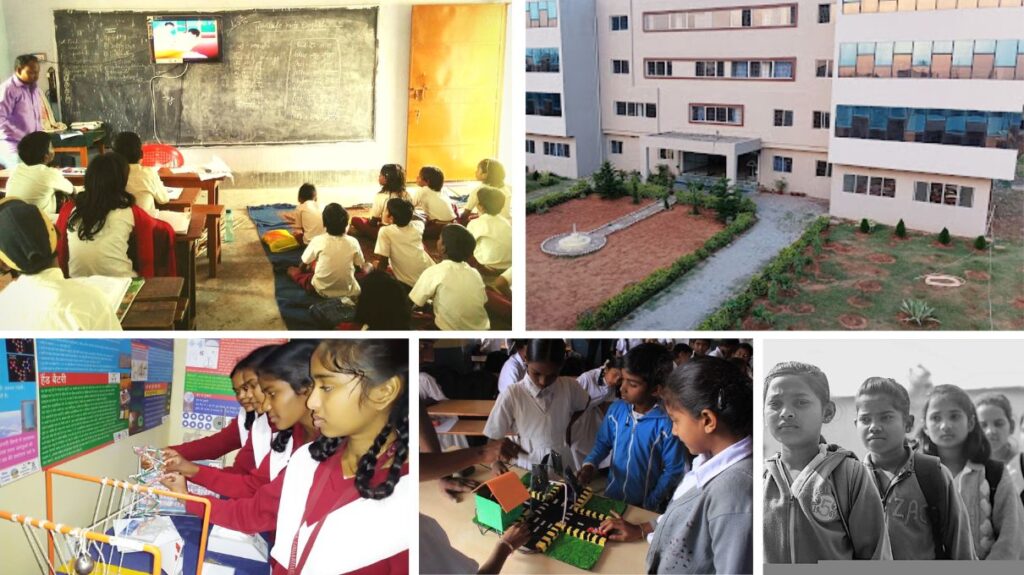
Universities and Higher Education
Jharkhand is home to several prestigious universities and institutions. These include:
- Ranchi University and Binod Bihari Mahto Koyalanchal University in Dhanbad.
- Indian Institute of Management (IIM), Ranchi and Indian Institute of Technology (Indian School of Mines), Dhanbad.
- XLRI – Xavier School of Management, Jamshedpur, a leading business school.
- Birla Institute of Technology, Mesra and National Institute of Technology (NIT), Jamshedpur, which are top institutions for engineering education.
- The Central University of Jharkhand and National University of Study and Research in Law are notable academic hubs for students.
Healthcare in Jharkhand
Health Infrastructure
Ranchi, the state capital, has witnessed substantial growth in healthcare infrastructure, with a rise in both private and public hospitals. Rajendra Institute of Medical Sciences (RIMS) is the largest government medical facility in Ranchi, offering advanced medical services. Private hospitals such as Tata Main Hospital in Jamshedpur and Bokaro General Hospital are also major health providers in the state, particularly for cancer and heart-related treatments.
Health Challenges
While Jharkhand has made significant strides in healthcare, the state still faces challenges, such as fluoride contamination in groundwater, which affects rural populations. Fluoride levels above the WHO recommended limits have caused dental and skeletal fluorosis, especially in districts like Palamau and Garhwa. Health experts are working on solutions like increasing calcium intake and defluoridation methods.
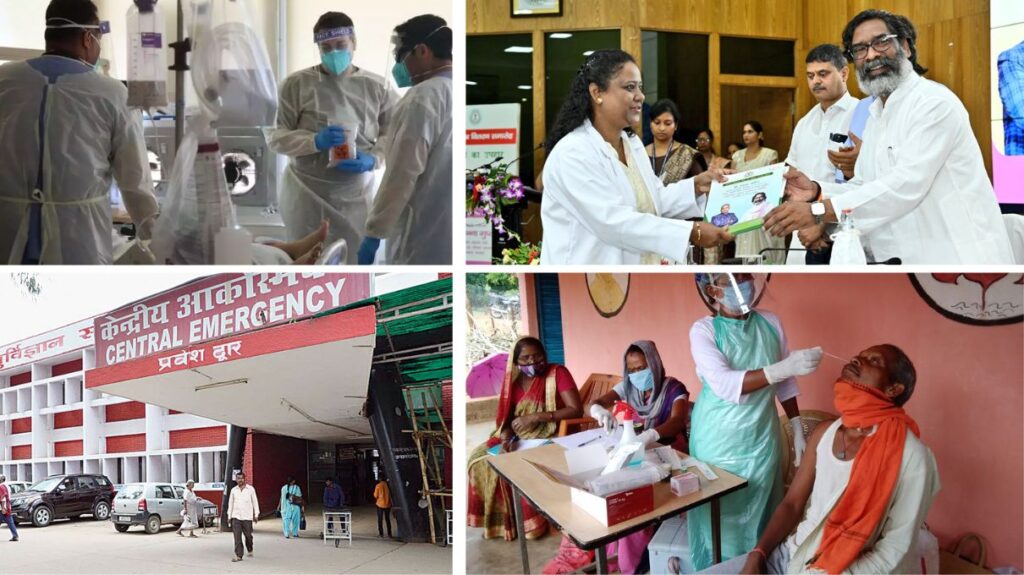
Public Health Concerns
The state also grapples with issues like tuberculosis (TB), which has reached epidemic levels in certain areas. The Itki TB Sanatorium in Ranchi is a key institution for the treatment of TB and drug-resistant TB. Other health initiatives are focused on providing free TB treatment and building awareness about preventing malnutrition-related diseases.
Agriculture and Economy in Jharkhand
Agriculture
Agriculture remains an essential part of Jharkhand’s economy, with a large proportion of the population dependent on farming. The main crops grown include rice, wheat, maize, pulses, and vegetables like tomato, carrot, brinjal, and pumpkin. Jharkhand is also known for its sericulture industry, which is supported by the Jharkhand Silk Textile and Handicraft Development Corporation (Jharcraft).
Mineral Resources and Industry
Jharkhand is rich in mineral resources, accounting for a significant portion of India’s coal, iron ore, and mica reserves. The state’s mineral wealth supports major industries, including Tata Steel in Jamshedpur, which is one of the largest steel producers in the world. Additionally, the coal mining industry in Dhanbad and Bokaro plays a crucial role in India’s energy production.

